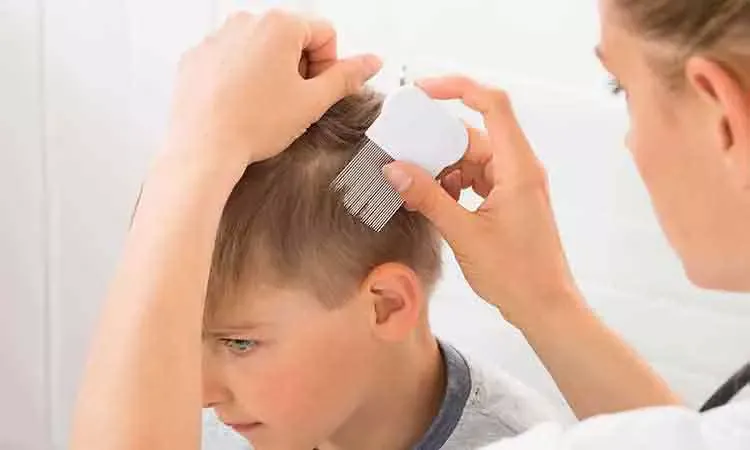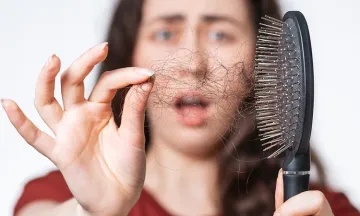Hair Loss in Children
“A FIVE-YEAR-OLD schoolgirl, Stuti was asked to remove her hair piece during English lessons as it could cause a danger to other students if it slipped off.
Her furious mum Rekha, 27, who also suffers from alopecia, claims the youngster was left “humiliated” after being told the wig was “not part of her school uniform”.
Little Stuti has suffered from alopecia for 12 months and now has 14 bald patches. Can you imagine this? 14-bald patches on a 5-year-old kid’s head! How difficult it must be for the little child to handle the unusual condition at such a young age.
While, we easily become upset and always complain about our hair loss problem, dry and thinning hair, she attends school every day with a smile on her face. Bravo! But, soon other children began noticing her hair loss problem and started teasing her. She was so pleased when she had the wig on. She had the biggest smile on her face. But, her mum wasn’t so happy and convinced. She wanted a permanent solution for hair loss.
Yes, it’s true - Hair loss, or alopecia, isn’t just a problem for adults. It is responsible for an estimated 6-8 per cent of clinic visits for anxious parents worldwide.
Hair loss in children is a scary and frustrating prospect for parents, primarily because they don’t expect their kids to lose hair. However, the good news is that, with proper diagnosis and homeopathy treatment for hair loss, most cases in children can be managed successfully. One must know the reasons for hair loss in children to address the condition on time. So, let’s find out, why kids lose hair at young age -
Here are some medical causes of hair loss in children
- Ringworm
Tinea capitis, or ringworm of the scalp, is a fungal infection. It is a common cause of hair loss in children.
It presents with scaly patches of hair loss on the scalp. The patches are generally round or oval. The hair may be broken off on the surface of the skin; they may also appear like black dots on the scalp.
Ringworm is contagious. Make sure your child does not share any objects that touch the head or scalp, such as towels, caps, scarf, pillow cases, or brushes.
A microscopic examination confirms the diagnosis.
- Patchy Hair Loss
Patchy hair loss, or alopecia areata, is characterised by the sudden appearance of round or oval patches of hair loss. The patches are glossy or smooth — there may be no scaling or broken hair.
It is reported that nearly 25 per cent of children with patchy hair loss may also have pitting and ridging of their finger nails.
Most children regain their lost hair within a year’s time, albeit re- growth is erratic, or one may lose hair again.
About 5 per cent of children with the disorder may progress to alopecia totalis (HOMEOPATHY EFFECTIVELY TREATS ALOPECIA TOTALIS), or complete loss of all hair on the scalp. Some may also develop alopecia universalis, or total loss of body hair.
- Telogen Effluvium
This type of hair loss emerges following a bout of high fever, flu or severe emotional stress. It occurs when hair in its growth phase is abruptly stunted and moved into its resting phase. The shedding, a ‘mass migration’ of hair follicles from growth into dormancy, can last for up to six weeks. The hair loss is not total; it may also not show up in patches. Hair typically appears thin throughout the scalp.
Most parents who visit their doctor are worried that their child may have a dangerous illness or disease.
The redeeming part is hair takes 3-6 months to re-enter the growth phase — although this makes hair restoration look like a slow, long drawn-out process.
- Traction Alopecia
This is hair loss that occurs after physical damage to the hair. Traction alopecia is a common cause of hair loss, particularly in girls.
It can emerge due to fluffing, combing, washing, curling, blow drying, hot combing, straightening and bleaching.
Related: Top 10 Tips To Prevent Hair Loss
A point to note here is the very hairstyles that are used for kids to make them look cute may be damaging to their hair.
Styles that apply tension to the hair, such as tight ponytails, braiding, barrettes and permanent weaving, can also damage the hair and trigger hair loss.
The hair will usually return, after counseling and hair fall treatment, but re-growth can be slow. Because, the ‘injured’ hair follicles do not heal quickly, they often take 3-6 months before they return to their growing phase.
- Trichotillomania
This type of hair loss is caused when the child pulls, plucks, twists, or rubs his or her hair vigorously — owing to emotional distress, peer and parental pressure.
The hair loss is patchy and ‘represented’ by broken hair of varying length.
Patches are also most often seen on the side of the child’s dominant hand.
Girls, having emotional problems, seem more inclined to pull their own hair, rather than boys.
- Coping with Hair Loss in Children
It's always tough to be different, especially in a way that's easy for people to notice. Friends and classmates can make all the difference to your child who's dealing with hair loss. They can tease your child and make him or her feel even worse. Hence, if your child has the aforementioned conditions, then realize that it is an emotionally difficult time for him/her.
Get prompt homeopathy treatment for hair loss. Don’t ignore the psychological and emotional aspects. Acknowledge and validate their feelings. Help them work through their emotions.
With timely intervention and hair fall treatment, your child will have a reason to smile again! You can also speak with our doctors and seek consultation by visiting https://www.drbatras.com/book-an-appointment




